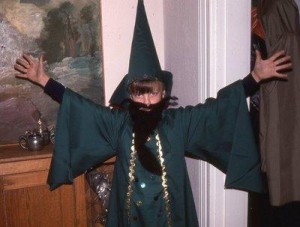

A Theory of Fun for Game Design is written by an author who deeply loves games, understands how they work, and believes in them as an art form. As the forward by Will Wright notes, Koster brings a multi-disciplinary method to the examination of games, pulling out basic concepts and breaking them down in a way that is both easy to understand and enjoyable to read. Accompanying his pithy observations are cartoons illustrating each concept, such as the illustration accompanying “Stories are powerful teaching tools in their own right, but games are not stories,” in which one student says to another, “I beat the last level of Ulysses last night. I had to use god mode for the end boss. Molly is really tough!”
A listing of the chapters provides a good sense of the book:
With Gamergate still brewing merrily on Twitter, those last few items seem particularly important. “The Ethics of Entertainment” contains all sorts of useful stuff, including a passage about end user experience typical in Koster’s wry, succinct summations:
The dressing is tremendously important. It’s very likely that chess would not have its long-term appeal if the pieces all represented different kinds of snot.
He goes on to say something that resonates with recent discussions:
The ethical questions surrounding games as murder simulators, games as misogyny, games as undermining traditional values, and so on are not aimed at games themselves. They are aimed at the dressing.
Koster extends that even further, saying directly “Creators in all media have a social obligation to be responsible with their creations.”
Despite Koster’s correct insistence that games are not stories, for writers, Koster’s book is well worth reading. A lot of the material overlaps with the ways people enjoy stories, particularly the section about the brain.
The book may also change the way you perceive games when playing them, mainly because Koster talks about them in terms of an art form, like a story or a painting, rather than the trivial pursuit label that sometimes get slapped on such entertainments. Koster believes deeply in the evolution of games to something as immersive and enlightening as any other media.
#sfwapro
...

We went around the “table” first generating some high level concepts, such as vampires being very rare in this world, the existence of neon elementals, and some rule-specific stuff that kinda flew past my head, but which I’m understanding more as I keep going through the rules. The game’s set in Las Vegas, but successive rounds helped define the specifics of the world and some of the NPCs, like Wayne Newton: Werewolf Hunter or the Count, a bitter, twisted man who runs The Society for the Preservation of Vampires. Lowell’s blogged with more complete details here.
I really love this sort of session, because it’s so much fun to take someone else’s addition and riff on it. After the first round, the person starting each one had to come up with what’s called in Microscope terms a “lens,” something that each addition that round must reference. Ours were: guides, corruption, and alien abduction, and if you look at Lowell’s write-up, you may be able to trace where some of those items came from.
...

One of the desires expressed at the very first Armageddon player-staff meeting I ever attended was a yen to move away from “a hack and slash economy,” where players made their income by selling the gear off NPCs (and the occasional PC) that they had killed. How, one immortal noted, could the world be realistic when there was no coded reflection of the material underpinnings of it? How to create this economic reflection was a question that remained in the air for several years, and it was not until discussion of implementing crafting code came up that such a move seemed possible.
...
Want access to a lively community of writers and readers, free writing classes, co-working sessions, special speakers, weekly writing games, random pictures and MORE for as little as $2? Check out Cat’s Patreon campaign.

"(On the writing F&SF workshop) Wanted to crow and say thanks: the first story I wrote after taking your class was my very first sale. Coincidence? nah….thanks so much."

(science fiction, flash story) They kept telling us what high ratings his show was getting. All of us bit players should be proud, the producers said. When he couldn’t see us, we celebrated, giving each other high fives while we waited for him to appear and pass. When he came into sight, we’d act as we’d been instructed. He wasn’t to know that it was a show.


This site is protected by reCAPTCHA and the Google Privacy Policy and Terms of Service apply. This site is a participant in the Amazon Services LLC Associates Program, an affiliate advertising program designed to provide a means for sites to earn advertising fees by advertising and linking to Amazon.com.